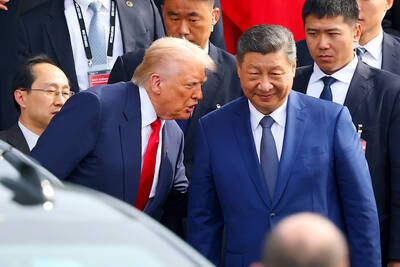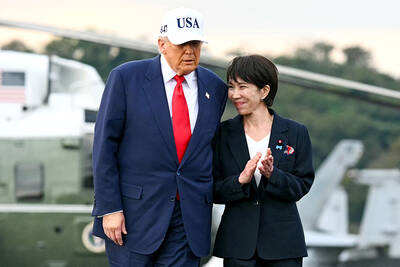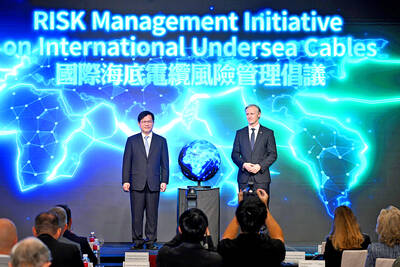A prominent US scientist who visited North Korea's nuclear facilities said on Wednesday he was not convinced the communist state could turn its nuclear technology into a weapon or mount it on a missile.
But Siegfried Hecker, former head of Los Alamos National Laboratory, one of America's top nuclear research facilities, said Pyongyang's program, which Washington is trying to halt, was still of great concern.
Hecker told the Senate Foreign Relations Committee that North Korea probably could make plutonium metal, a key weapon ingredient, and that 8,000 spent fuel rods that could be used to produce fuel for nuclear bombs were missing from a storage area at the country's nuclear complex at Yongbyon.
He also said that a plant for reprocessing nuclear-bomb-grade fuel was in good repair, that North Korean scientists had the technical expertise needed for reprocessing plutonium, and that a five megawatt nuclear reactor was "operating smoothly" and adding to the North's plutonium cache by 6kg a year.
The US has long asserted the North has enough plutonium for at least one or two nuclear weapons. If the 8,000 spent fuel rods were reprocessed between January and June last year as Pyongyang says, that would fuel at least a half dozen more bombs, experts say.
Hecker was speaking in public for the first time since he and other members of an unofficial US delegation, including former US envoy to North Korea Charles "Jack" Pritchard, paid an unprecedented visit to Yongbyon at Pyongyang's invitation two weeks ago.
Senator Joseph Biden, the panel's ranking Democrat who attended a closed-door briefing with Hecker on Tuesday, said the North "appears to be well along the path toward becoming a full-fledged nuclear weapon state."
In the public session, Hecker said the North Koreans hoped the visit would prove their nuclear capability and strengthen their hand in negotiations with the US, which is working with four other regional states to negotiate an end to the programs.
But despite unique access to Yongbyon and detailed talks with nuclear engineers, Hecker said he still had "uncertainties" about Pyongyang's program.
The North showed it "most likely had the capability to make plutonium metal," a prerequisite for nuclear weapons, he said.
"However, I saw nothing and spoke to no one who could convince me that they could build a nuclear device with that metal and that they could weaponize such a device into a delivery vehicle," such as a missile, he said.
The North Koreans took the "extraordinary step" of displaying two glass jars housed in a wooden box inside a metal case that they claimed contained plutonium reprocessed last year from the 8,000 spent fuel rods, he said.
One glass jar reportedly contained 150 grams of plutonium oxalate powder and the other, 200 grams of plutonium metal.
Hecker held one jar in his hands, gloved for safety, to get a feel for density and heat content and said "it certainly was consistent with the way plutonium [metal] looks."
But as he was not able to do all the necessary scientific measuring, Hecker said he could not be more conclusive or say if the substance came from reprocessing last year.
He confirmed the spent fuel rods were gone from the holding pond because canisters in which they were stored were missing or open.

UKRAINE, NVIDIA: The US leader said the subject of Russia’s war had come up ‘very strongly,’ while Jenson Huang was hoping that the conversation was good Chinese President Xi Jinping (習近平) and US President Donald Trump had differing takes following their meeting in Busan, South Korea, yesterday. Xi said that the two sides should complete follow-up work as soon as possible to deliver tangible results that would provide “peace of mind” to China, the US and the rest of the world, while Trump hailed the “great success” of the talks. The two discussed trade, including a deal to reduce tariffs slapped on China for its role in the fentanyl trade, as well as cooperation in ending the war in Ukraine, among other issues, but they did not mention

Japanese Prime Minister Sanae Takaichi yesterday lavished US President Donald Trump with praise and vows of a “golden age” of ties on his visit to Tokyo, before inking a deal with Washington aimed at securing critical minerals. Takaichi — Japan’s first female prime minister — pulled out all the stops for Trump in her opening test on the international stage and even announced that she would nominate him for a Nobel Peace Prize, the White House said. Trump has become increasingly focused on the Nobel since his return to power in January and claims to have ended several conflicts around the world,

CALL FOR SUPPORT: President William Lai called on lawmakers across party lines to ensure the livelihood of Taiwanese and that national security is protected President William Lai (賴清德) yesterday called for bipartisan support for Taiwan’s investment in self-defense capabilities at the christening and launch of two coast guard vessels at CSBC Corp, Taiwan’s (台灣國際造船) shipyard in Kaohsiung. The Taipei (台北) is the fourth and final ship of the Chiayi-class offshore patrol vessels, and the Siraya (西拉雅) is the Coast Guard Administration’s (CGA) first-ever ocean patrol vessel, the government said. The Taipei is the fourth and final ship of the Chiayi-class offshore patrol vessels with a displacement of about 4,000 tonnes, Lai said. This ship class was ordered as a result of former president Tsai Ing-wen’s (蔡英文) 2018

GLOBAL PROJECT: Underseas cables ‘are the nervous system of democratic connectivity,’ which is under stress, Member of the European Parliament Rihards Kols said The government yesterday launched an initiative to promote global cooperation on improved security of undersea cables, following reported disruptions of such cables near Taiwan and around the world. The Management Initiative on International Undersea Cables aims to “bring together stakeholders, align standards, promote best practices and turn shared concerns into beneficial cooperation,” Minister of Foreign Affairs Lin Chia-lung (林佳龍) said at a seminar in Taipei. The project would be known as “RISK,” an acronym for risk mitigation, information sharing, systemic reform and knowledge building, he said at the seminar, titled “Taiwan-Europe Subsea Cable Security Cooperation Forum.” Taiwan sits at a vital junction on